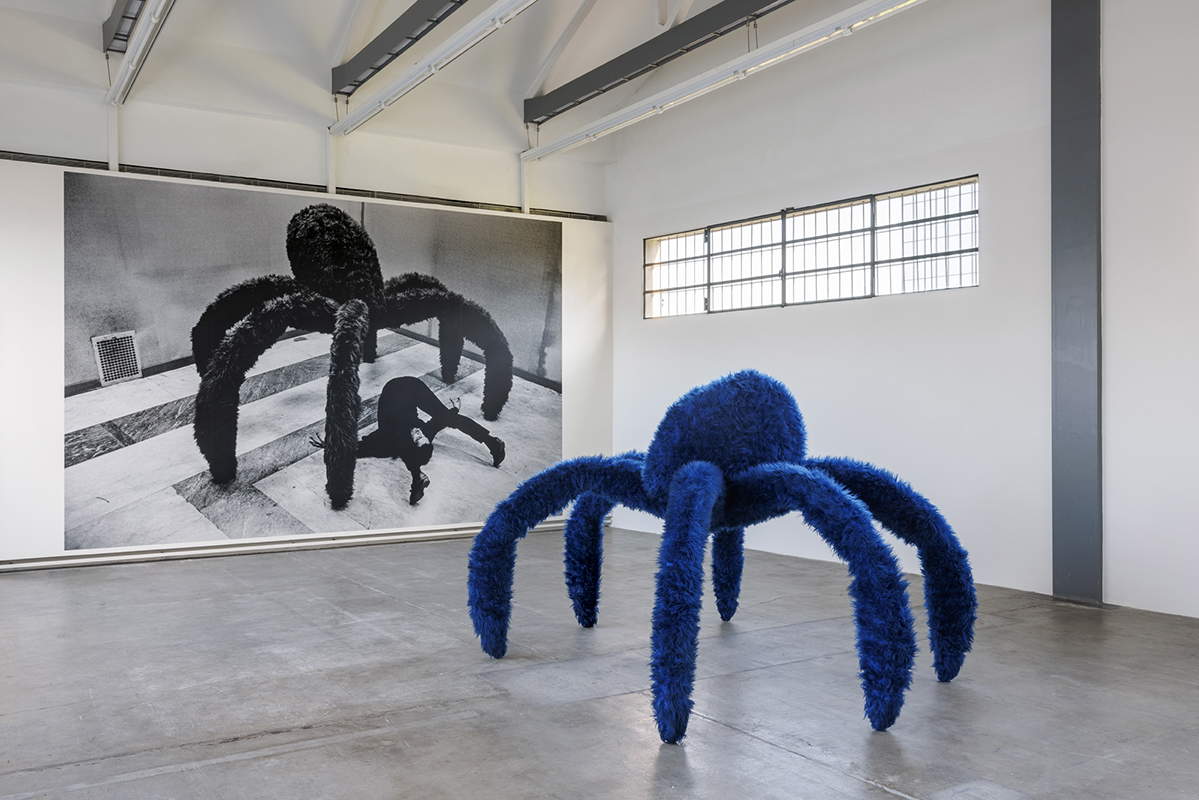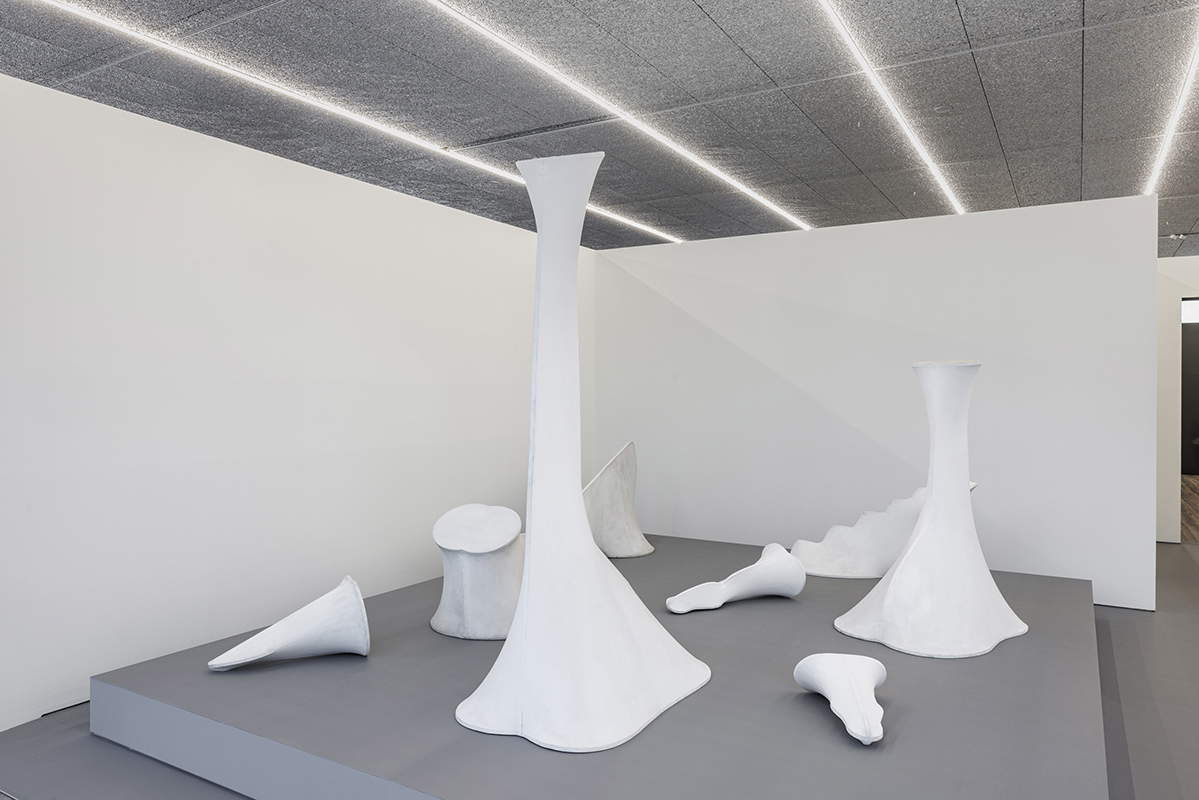One of the most beautiful photographs of Pino Pascali was taken by Andrea Taverna in the artist’s Roman studio in 1968: it depicts him as a rural shaman, dressed in raffia costumes and other objects. In fact, however, at its highest points, that shoot had taken on the posture and elegance of fashion photography, capturing Pascali’s regular, appealing, if not too maudit, profile. It is always an oscillating give-and-take relationship here between the artist’s intentions and the photographer’s eye, to which certainly the former must have consciously attributed a crucial position: he had understood the role of the art photo in giving an aesthetic form to situations that would otherwise have been lost in a documentary, had he not attempted a reinvention with the new language and relying on a photographic eye.
It was not, moreover, a fixed relationship, but a directing game that changed from time to time depending on the collaboration and eye of the photographer and his attunement to the modes of the neo-avant-gardes. In 1965, for example, Claudio Abate left a lot of space for Pascali, placing himself in the attitude of the viewer who documents what he sees by keeping himself offstage, without getting too close to the subject, and agreeing with the artist in leaving uncovered the device of fiction set up in the studio behind the “weapons.” Pascali participates in the staging by disguising himself as necessary as a soldier or a shaman, the studio or gallery being the space for stage actions, to be moderately concealed, so as to leave the simulation visible: one can clearly see, in Abate’s series, the cloth put up as a backdrop to cover the artist’s workshop, but not enough not to highlight instead a floor very much worn by Pascali’s own interventions.
In the background, and this is perhaps the most important aspect, there remains an intense relationship between the artist’s bursting physicality, which is also expressed in the video footage: a free and uninhibited approach with his own body in front of the camera or the camera, and with the manipulated matter at the former. These are simple gestures and elementary actions, such as plowing with a rake and symbolically sowing strands of bread, recalling ancestral memories in an only apparently naive way. It is difficult to say whether indeed, as the curators of the major exhibition organized by the Fondazione Prada in Milan claim, Pascali was a cynical director of his own image, calculating in preparing useful photographic material to circulate in newspapers or in his own catalogs: an approach at once playful and narcissistic, but truly instinctive and empirical, entrusting the photographer’s eye with the aesthetic restitution, is more plausible. Pascali, after all, never picked up the camera himself, or when he did, he used it as his own working material not intended for publication.




His, in the end, remains an impregnable profile, as it happens with the most inventive experimenters: one can detect passages in it that recall the work of others, and the dialogue with the trends of his time is obvious; but what for other artists was the main idea on which to build an entire career, for him was a passage that was consummated in a few series of works and then moved on to something else and probed other avenues. One gets a clearer and clearer sense of this as one proceeds through the Milan, Fondazione Prada exhibition, which entrusts to a somewhat didactic section on materials the reasoning about the context of the research in which the artist moved and worked. In the very few years of his career, which was abruptly cut short on the threshold of the age of thirty-three, Pascali experimented, in short, with a bit of everything, with an openness, a curiosity and a nonchalance that approached him but did not flatten him to any of his peers or younger artists: the paraphernalia fielded by Arte Povera artists, here, is squared in its entirety, and so is that of the plastic and artificial materials so dear to the “pop” temperaments. Nonetheless, as Marco Tonelli reiterated in his recent book published by Electa, he remained irreducible to any current, and elusive to any attempt to pigeonhole him into the trends of his time, albeit with numerous tangencies with the outside world. Even the drawings in the “notebook of annotations,” republished edited by Tonelli for the publisher De Luca in Pascali designs Pascali, show eloquent attunements with the design drawing of the time, following a habit of rapid and immediate visualization of figurative ideas practiced consistently by, for example, Lucio Fontana: both of them, as soon as the opportunity arose, did not disdain the rapidity of the ballpoint pen to stop their ideas even more quickly on paper, without the rituals and exercises of patience required by the nib and ink.
Hence, at a quick glance at the Prada exhibition, there is a little bit of everything and it does not allow itself to be locked into any scheme, except understanding certain labels as categorical systems. Debts are there, as to De Chirico, but one would perhaps not explain the choice of blue synthetic furs, with such an unnatural color, without the circulation in Italy of Yves Klein’s monochromes. With him as with others, however, Pascali kept a casual and uninhibited attitude, not at all obsequious even with Brancusi, to whom he also owes much.
This trait also emerges from the re-presentation at the Fondazione Prada, albeit partial and decimated in the number of works (more an abstract re-enactment than a true re-enactment) of the artist’s solo exhibitions, which say much about a season of frenetic transformations. The one at the Tartaruga in January 1965, for example, induces one to reflect on the exit from the Informal in close dialogue with the School of Piazza del Popolo (one would not otherwise explain his Colosseo in tempera on cloth mounted on a shaped frame) and inevitably with De Chirico (his is the primogeniture of the little clouds profiled in sponge in Ruderi su prato). But all this passes through the school of Toti Scialoja and his idea of painting made by imprints, between nature and artifice, as Tonelli pointed out several times. In them there is already the idea of an exhibition as the creation of an environment, in which, however, the play of illusions is uncovered: just look at the square of synthetic grass, which occupies two modules of a floor/base made of white canvases laid on the ground. It is the set design that pushes toward the shaped canvases, in the extroversions with erotic and material allusions, from fleshy lips to pregnant bellies.




The “weapons” exhibited instead by Sperone in January 1966 take the game of make-believe a bit further: at the crossroads of whether to take a conceptual route, on metaphysical premises, or one of ironic assemblage, he chose the second option. The disguise is explicit, because the mechanical parts and tools put to use here are more than obvious, but not immediately recognizable, because Pascali painted everything so as to hide, or simulate the unity of a complex. He does not like rust and also the debt to Dada comes out consequently less explicit than the Duchampian echoes of Colla: the latter, after all, aimed at the totem pole, while Pascali went toward the fabrication of a real plausible object.
One then wonders if an exhibition of “animals” like the 1966 one at the Attico was possible without living in the Italian capital of cinema, where a rudimentarily rendered sci-fi imagery might have been more tangible: how else to explain the profusion of oblong tentacles, phallic at times, or with jagged outlines, and fragments of dinosaurs ready to be assembled like a monumental boxed game of opaque white pieces, like the mythical whiteness of the plaster casts in Brancusi’s atelier, but with the seams of the canvases clearly in view? That impression is confirmed in the subsequent exhibition at the Attic, with the steel wool lianas and other elements of a possible set in the jungle.
The key point is that Pascali’s was an all-visual sculpture, designed for the glance, and malleable to photographic capture, but lacking a tactile vocation: a three-dimensional graphic installation that emancipated him from the visionary and holographic world of certain Surrealist painting, but still ready for a two-dimensional rendering-not simply documentation-that would accentuate the profiles, always sharp and clearly legible. All in all, the material rendering counts less, while resorting to large copies of heterogeneous materials, but with the lightness of ephemeral apparatuses made to last the time of a representation, before landing in scattered pieces in collectors’ homes.
Warning: the translation into English of the original Italian article was created using automatic tools. We undertake to review all articles, but we do not guarantee the total absence of inaccuracies in the translation due to the program. You can find the original by clicking on the ITA button. If you find any mistake,please contact us.